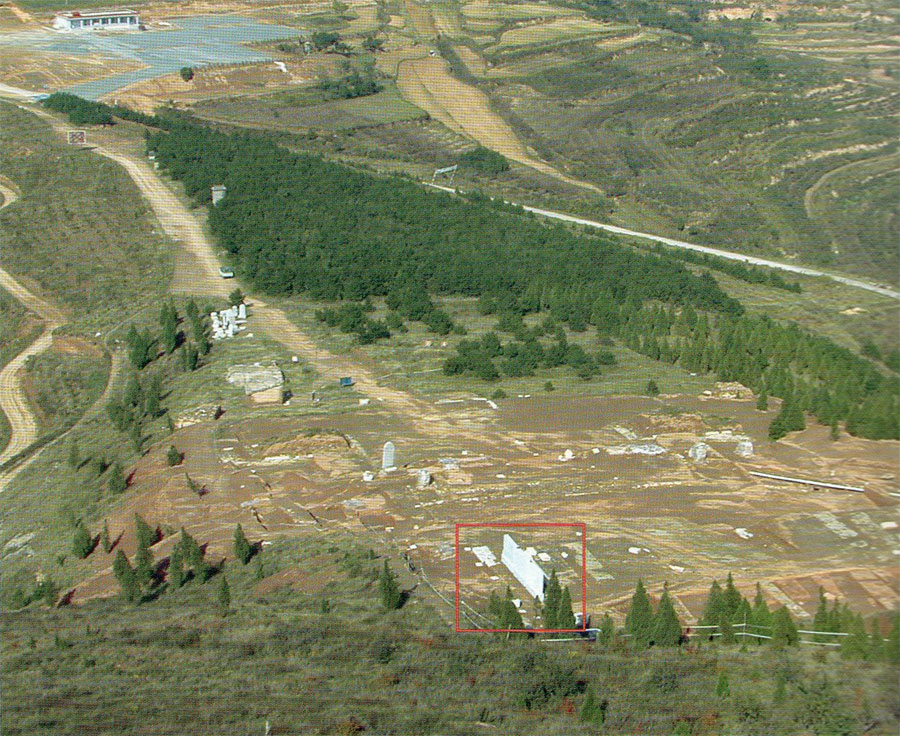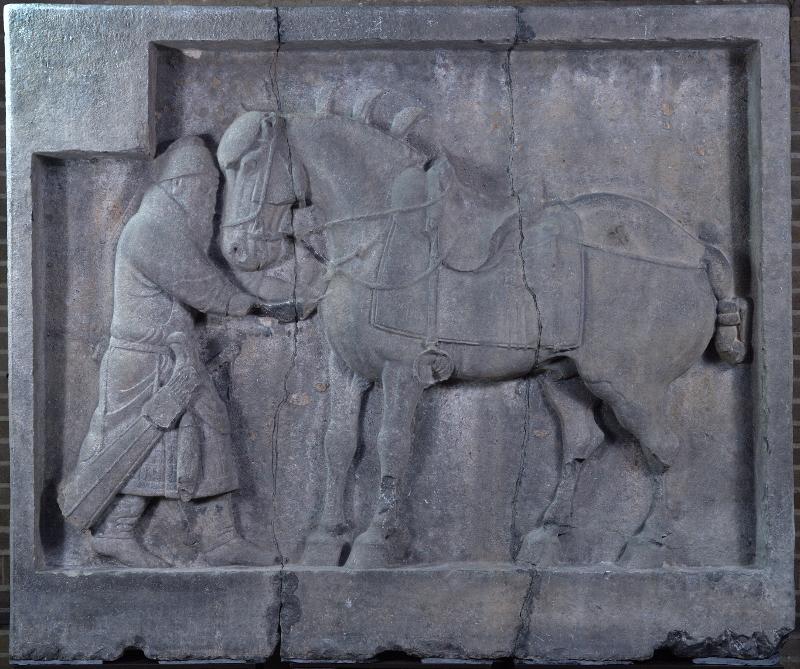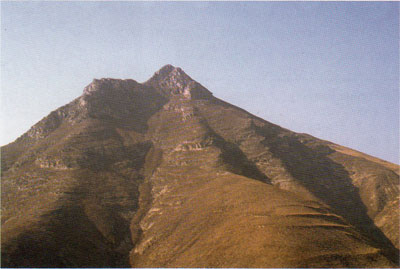
 In 2003 the Beilin Museum in Xi’an, China, informed the Penn Museum that an excavation was taking place at the site of Zhaoling in Shaanxi province. The author was permitted to visit the excavation, take photographs for research purposes, and publish this brief account. Zhaoling, the mausoleum of Emperor Taizong (reigned AD 626–49) of the Tang dynasty, occupies 20,000 hectares. The emperor’s tomb sits atop Jiuzong Mountain, with 185 auxiliary tombs scattered along its southern slope and a sacrificial altar on its northern slope. The latter is divided into several platforms. The middle platform was guarded by the Northern Sima Gate, while the highest platform previously contained six stone horse reliefs and 14 statues of statesmen commemorating the Emperor. The six horse reliefs were removed in the early 20th century. Four now reside in the Beilin Museum and the other two are housed in the Penn Museum (UPM # C395 & C396).
In 2003 the Beilin Museum in Xi’an, China, informed the Penn Museum that an excavation was taking place at the site of Zhaoling in Shaanxi province. The author was permitted to visit the excavation, take photographs for research purposes, and publish this brief account. Zhaoling, the mausoleum of Emperor Taizong (reigned AD 626–49) of the Tang dynasty, occupies 20,000 hectares. The emperor’s tomb sits atop Jiuzong Mountain, with 185 auxiliary tombs scattered along its southern slope and a sacrificial altar on its northern slope. The latter is divided into several platforms. The middle platform was guarded by the Northern Sima Gate, while the highest platform previously contained six stone horse reliefs and 14 statues of statesmen commemorating the Emperor. The six horse reliefs were removed in the early 20th century. Four now reside in the Beilin Museum and the other two are housed in the Penn Museum (UPM # C395 & C396).

The first season of the new excavations by the Shaanxi Provincial Archaeological Institute took place in 2002–2003 (with additional seasons planned for the future). As the head of its Sui-Tang Department, Zhang Jianlin excavated the Northern Sima Gate to obtain a comprehensive understanding of the architectural structure and layout of the areas above the Gate and to provide a solid base for the development of a scientific preservation plan of the site.
The excavation covered an area of 5,100 m2 and revealed the main architectural structures of the Tang (AD 618–907) and Qing dynasties (AD 1644–1911). Tang structures include two gate towers, two rectangular halls, a gateway, walls, a well-designed drainage system, and corridor pavilions for sheltering the stone statues and horses. The statues were placed parallel to each other on the east and west sides of the central pathway. On the west side, excavators discovered eight pairs of pillar bases, suggesting a long corridor divided into seven pavilions on each side. These pavilions are believed to have sheltered the states-men statues in the first four pavilions on each side and the horse reliefs in the last three pavilions on each side. Historical records suggest that the fifth and sixth pavilions on the west-side are where the two Penn Museum horses once stood.


The excavators also found many stone chips in a dumping pit of the same kind as those used for the horse reliefs, suggesting that the horse reliefs were very likely carved at the site of Zhaoling. Among the stone fragments, two were identified as the hoof and joint of the rear leg of Qingzhui, one of the horse reliefs now at Beilin. Each hair of this hoof was deliberately carved and its refinement remained well-preserved in the archaeological record. Considering the severe weathering noticeable on the six horse reliefs at the two museums, this indicates that this hoof broke off and was buried a long time ago. The archaeological evidence of the exquisitely refined carving skills, together with the horses’ important historical connections to the Emperor Taizong, has once again placed the six stone horse reliefs among the masterpieces of Chinese art history.
– Xiuqin Zhou is the Senior Registrar at the Museum.
For Further Reading
Orientations 32-2 (2001):40-46.
